| Stanford's
Blue Euphilotes stanfordorum Immatures |
| Home - Butterflies - Details |
| Female Eclosure Male Eclosure |
| Larvae
located
on Eriogonum
ovalifolium
flowers May 31 2013 #8- First Instar - 1.25 mm long Photo 2 June 2013 |
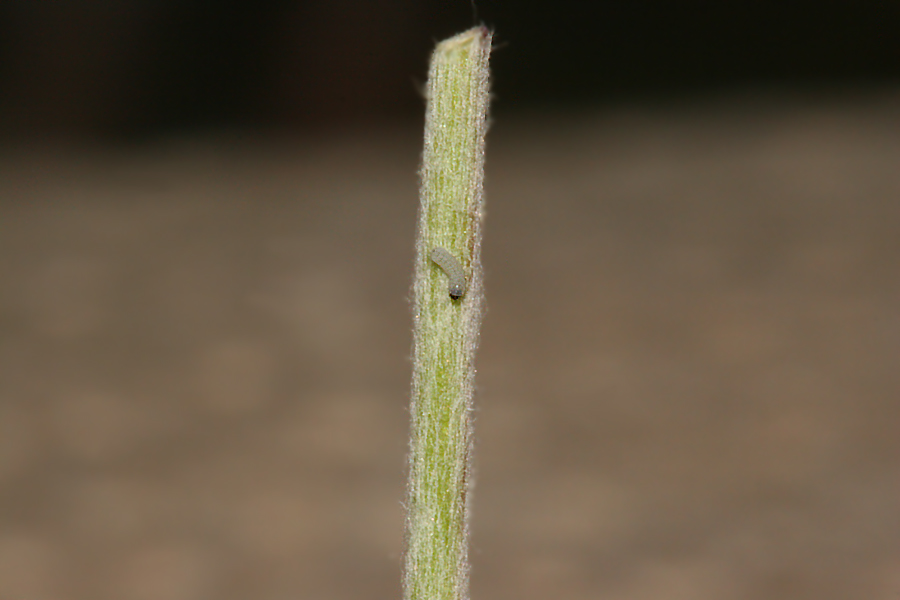
#3 Second Instar - 5 mm long
Photo 2 June 2013
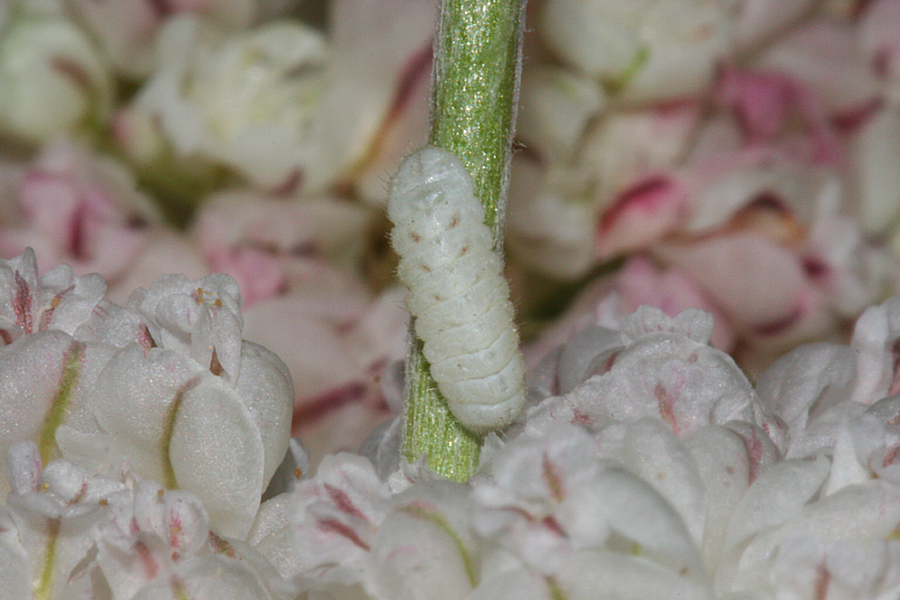
#3 Molted to Third Instar
Photo of exuvia - 3 June 2013
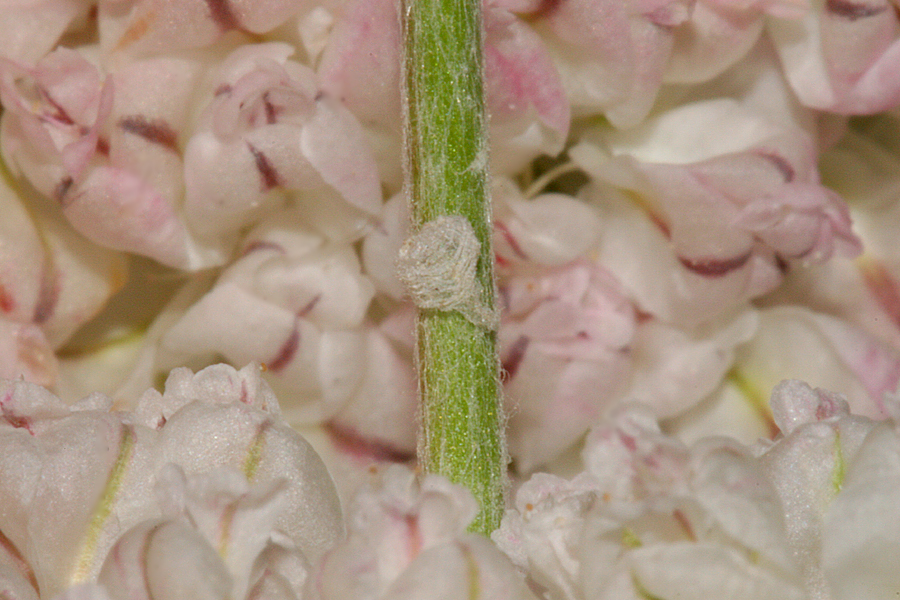
| #A
- Second Instar - 5 mm long Photo 1 June 2013 Photo shows that one of the tubercles near the posterior end of the abdomen is extended |
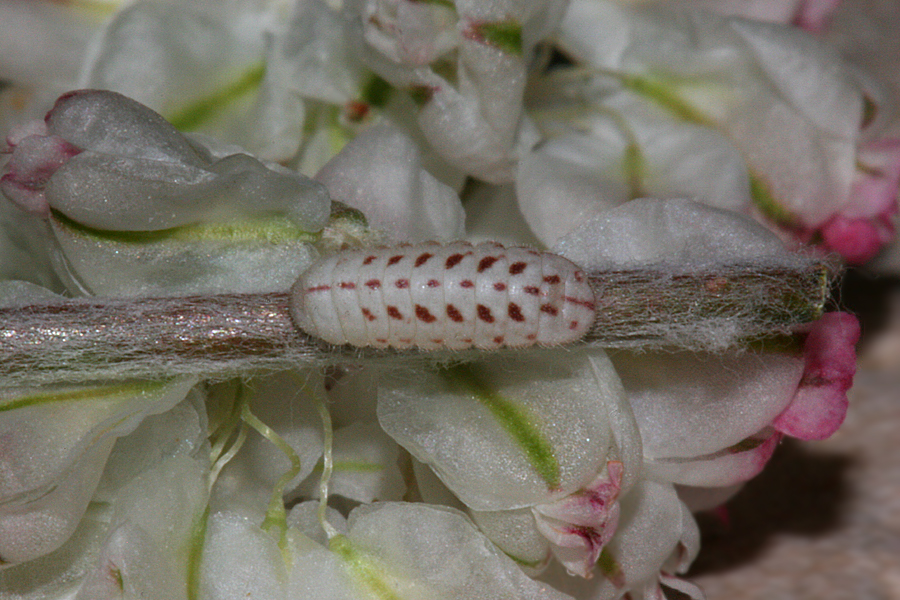
#A - Second Instar - 5 mm long
Photo 1 June 2013
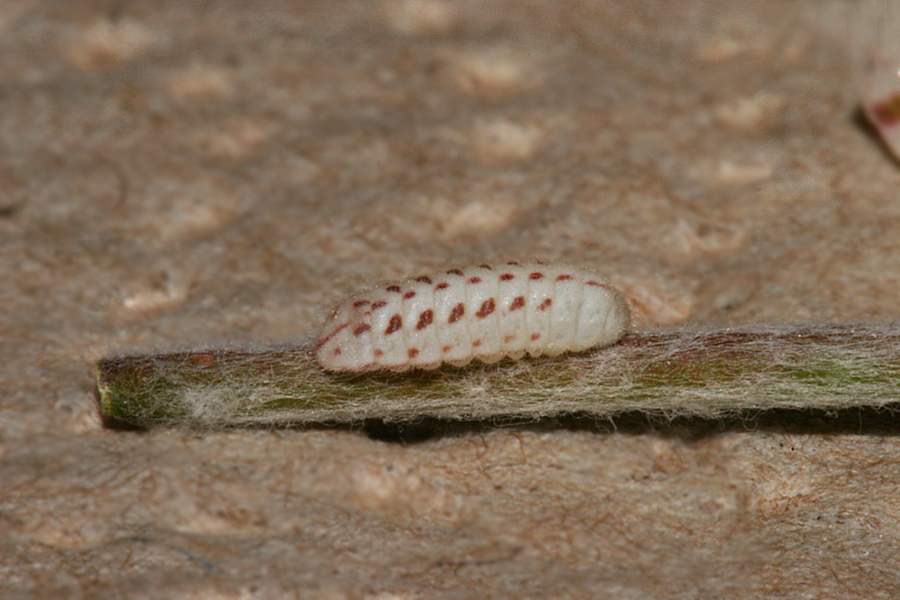
#1 - Third Instar - 6 mm long
Photo 1 June 2013
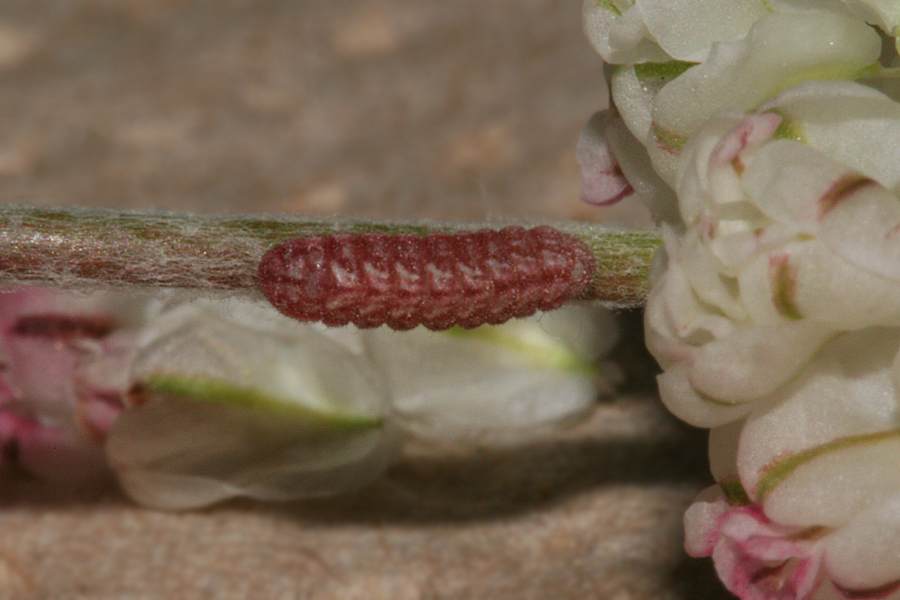
#1 - Third Instar - 6 mm long
Photo 1 June 2013
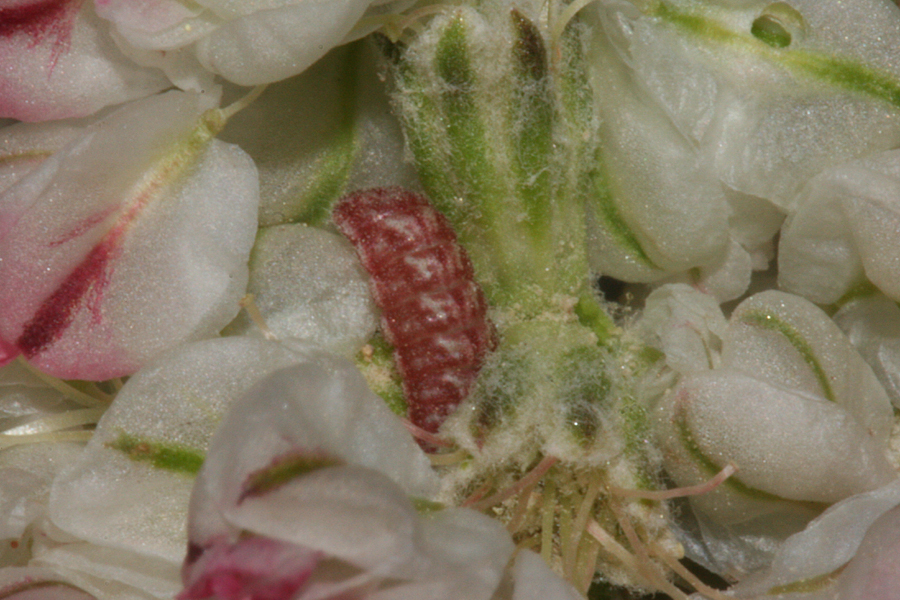
| #1
Third Instar - Dorsal Shows the pale colored diamond shaped thoracic shield behind the head 8 mm long - 4 June 2013 |
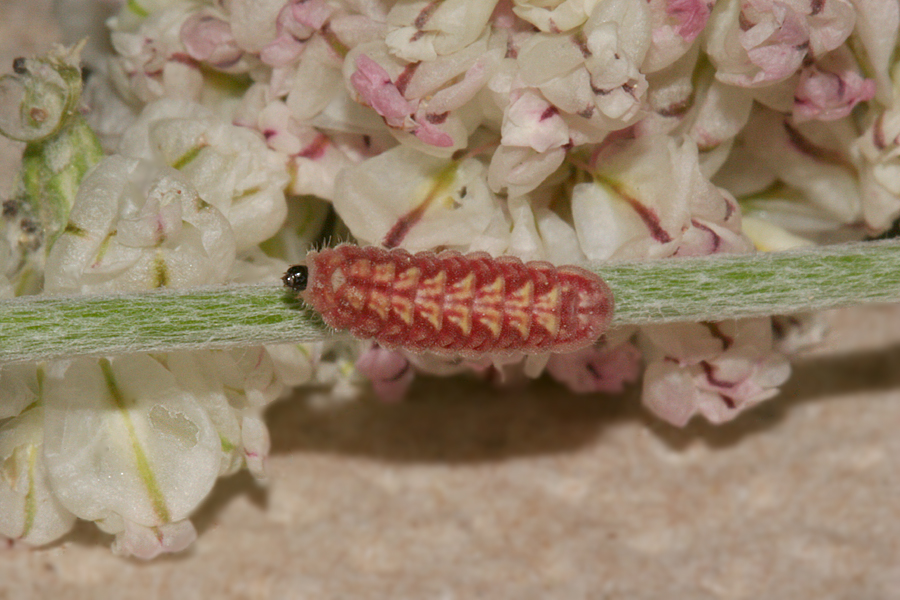
| #1
Third Instar - Lateral 8 mm long - 4 June 2013 Shows thoracic shield |
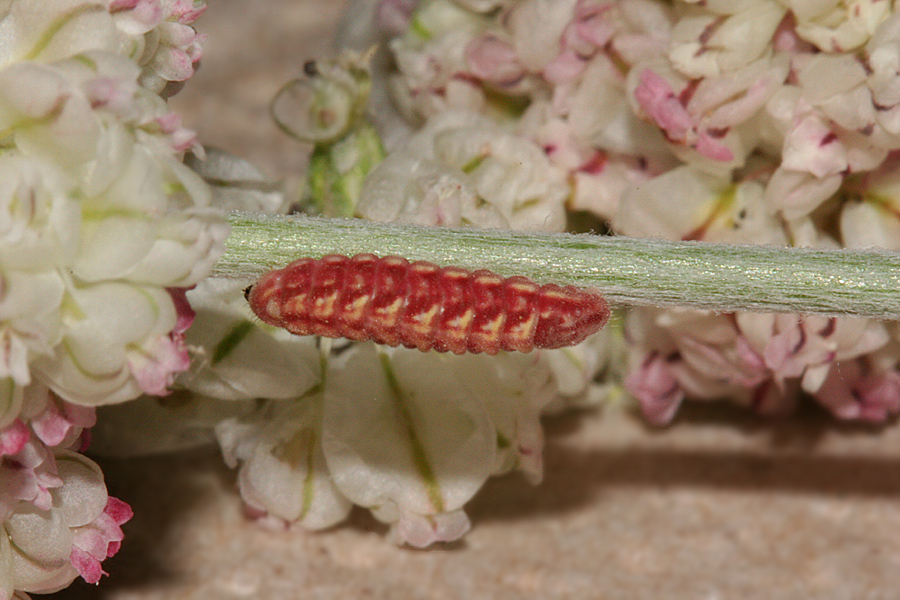
| #6 Fourth Instar
- 11 mm long - 5 June 2013 On 5 June, it began walking off the plant onto a paper at the top of container |
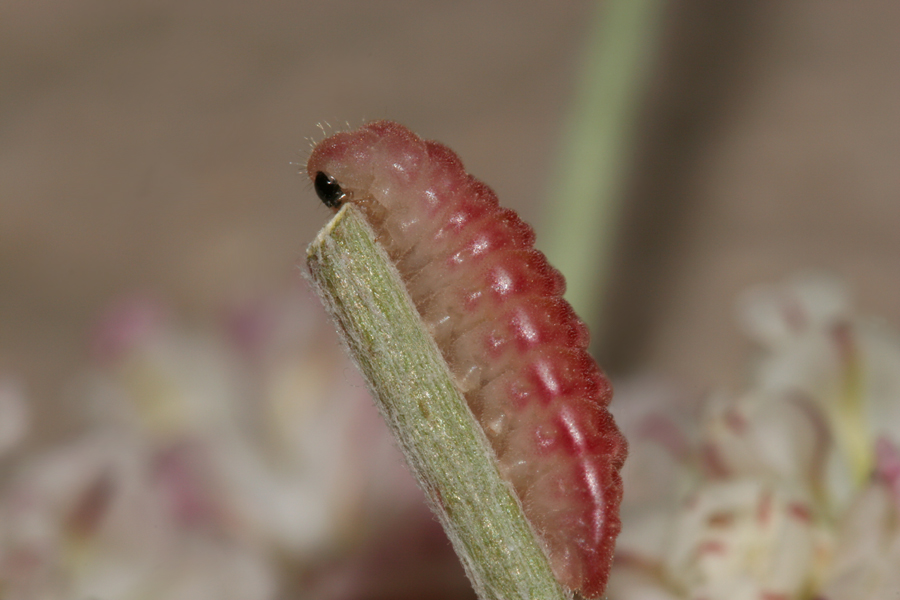
| #6 Fourth Instar -
11 mm long - 5 June 2013 On 5 June, It kept walking off the plant onto a paper at the top of container |
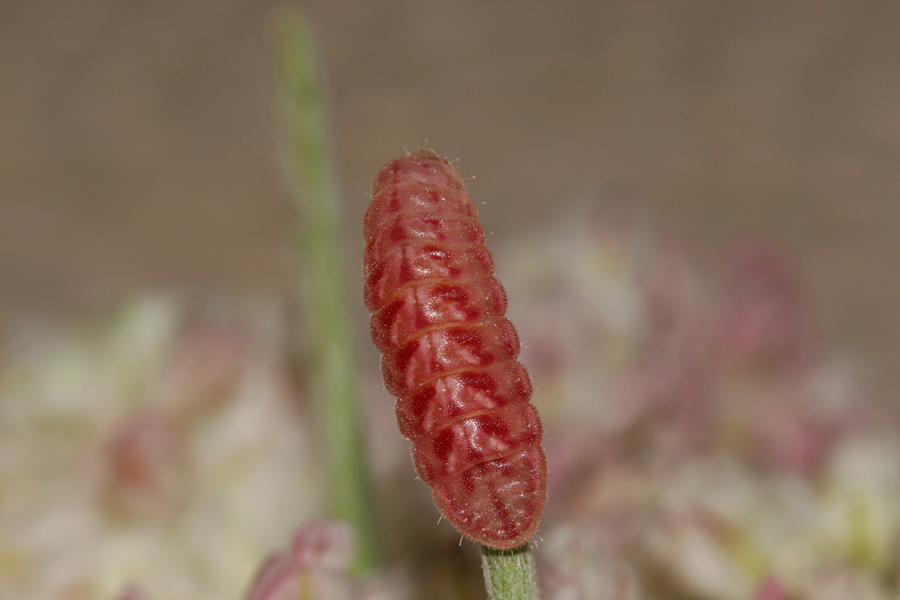
Pupa from June 2013
| Pupa #6 - June 11, 2013 | ||
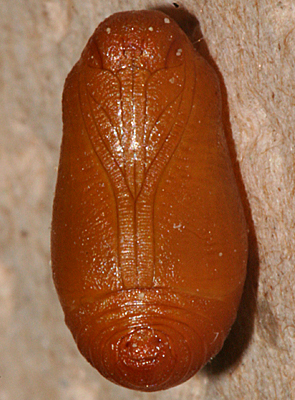 |
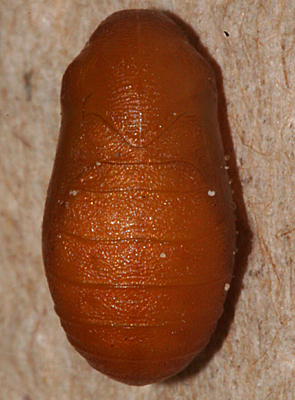 |
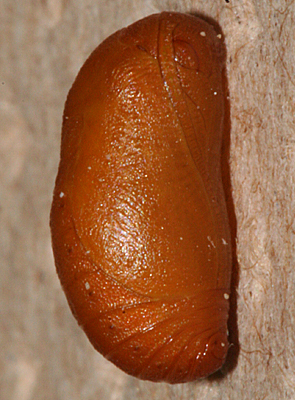 |
| #3
Pupa formed 27 June 2011 Dark eye 7 July 2011 - 7mm long |
|
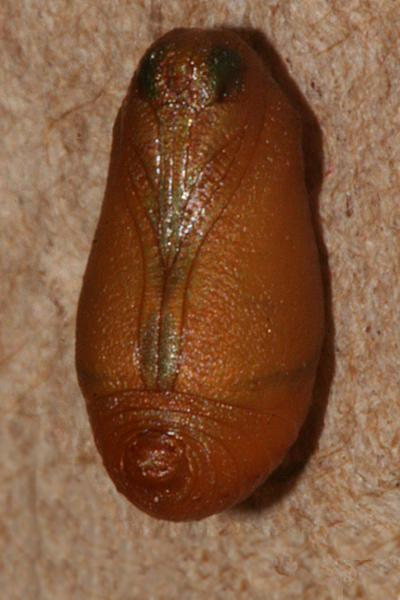 |
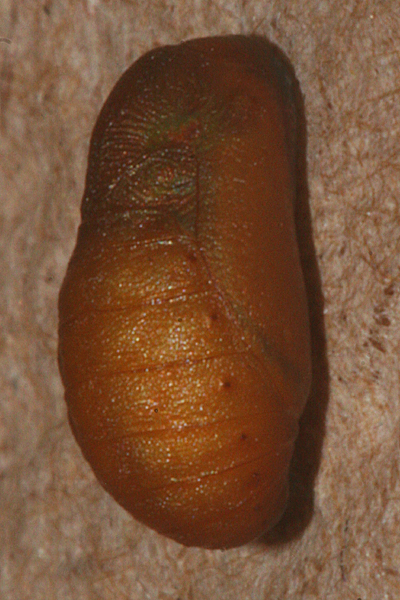 |
Pupa 9 July 2011 33 minutes before butterfly emerged |
|
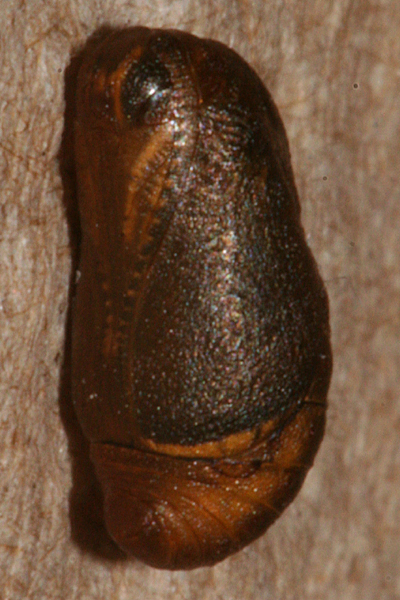 |
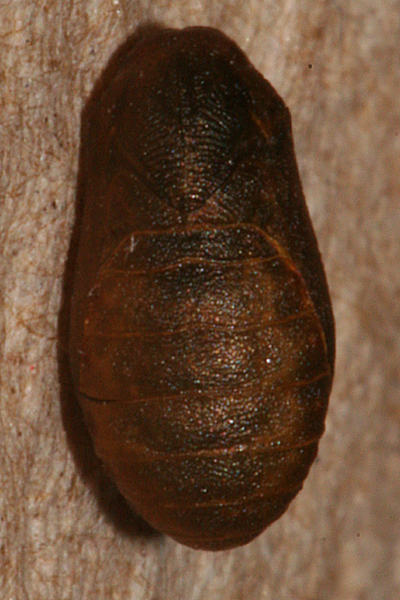 |
| PHOTO
AND OTHER
DETAILS -
©Nicky
Davis 2013 Nicky Davis, Les Davis and Jack Harry located larvae 31 May 2013 - Ferron, Emery County, Utah I don't know whether the tiny ants in some of these blossoms were tending the larvae. _______________________ 2011 located larvae 17 June 2011 at Ferron, Emery County, Utah #3 Pupa formed 27 June 2011, eye color developed and showed pink color 5 July 2011, eye turned black 7 July 2011, butterfly emerged 9 July 2011. Some of these pupae developed and emerged this same year without hibernating BROOD OR FLIGHT: one HOST PLANTS
 |